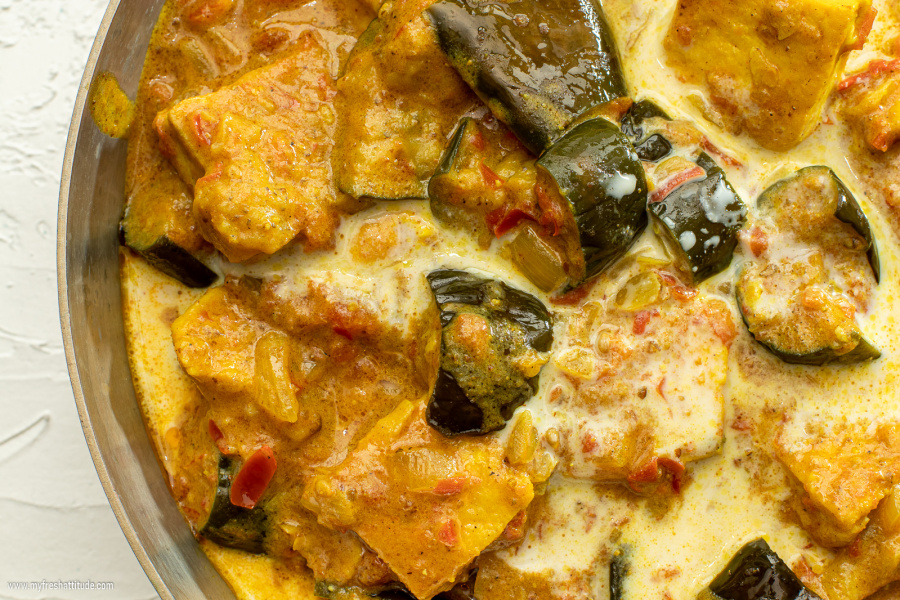
Creamy Curries – I Have Some Thoughts
Posted on March 18, 2021 by JackI love to indulge in a curry.
It doesn’t matter to me if the curry comes from Indonesia – you know, something like a classic aromatic Padang-style curry. Or any of a number of Indian-style curries – both spicy and mild. It could be a Moroccan-style curry (they usually call them a Tagine, but come on…they are essentially a curry). It can even be something entirely different – something made up on the spot using whatever seasonal vegetable I have on hand.
But I do have some curry rules.
- My curries must be vegan because, well…I do follow a vegan lifestyle.
- My curries must not include any sort of tropical fat like palm fat or coconut fat (including cream and milk)…it’s a saturated fat thing from my perspective.
- My curries must not include any kind of butter…ghee or smen…because…see rule #1.
- My curries must include a lot of aroma from spices and herbs.
- My curries must be creamy.
The last rule can be tricky – especially when going out to enjoy a curry in a restaurant because most people add creaminess to their curries by including some type of animal product or a tropical fat – usually coconut cream.
My solution when I’m making my own curry at home is to make my own thickener that will add creaminess and a small amount of flavor. Oh…it also needs to be flexible enough to alter depending on the style of curry I am making.
Let me explain…
My base recipe is very simple. I mix the following ingredients together in my mini-blender (I use a Nutribullet for this job):
2 tablespoons Cashew Butter
2 tablespoons Chickpea Flour
500 ml. (2 cups) Unsweetened Soy Milk
When I want (or need) to thicken my curry or lend a bit of creaminess to the dish just before serving, I pour some of my mix directly into the center of my cooking curry. I don’t stir the mixture. Instead, I allow the curry to swallow the thickener as it cooks. Once the mixture descends into the curry and begins to disperse – usually only a matter of seconds, I distribute the rest by giving the curry a quick stir with my spatula. The curry will thicken and become creamy rapidly, so I remove it from the heat, allow everything to settle for a few minutes then dive right in and enjoy a delicious (and much healthier) curry.
Variations are simple too.
Lend a flavor of coconut to the mix by adding coconut water in place of the soy milk. I think a half and half mix is great and I can taste the slight suggestion of coconut in the background.
Use tahini instead of cashew butter to create something more appropriate for a Moroccan or Israeli style stew (or if you prefer, just call it a curry).
Use almond butter instead of cashew butter to make something more Spanish…of course a bit of smoked paprika in the mix also helps.
The chickpea flour works the best in my opinion. The binding qualities is what I’m after, and I don’t want to use a heavily processed starch in most cases. Soy flour is another option because of the large amounts of fat and protein, but chickpea flour is more convenient to purchase.
One other interesting variation I sometimes add (and this is going deep into my archives of cooking tips) is the addition of my garlic puree. This will simply elevate your next curry to the next level of incredible deliciousness and creaminess…all without a hint of animal products or tropical fats!